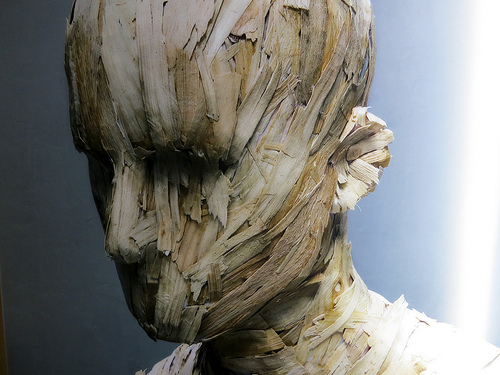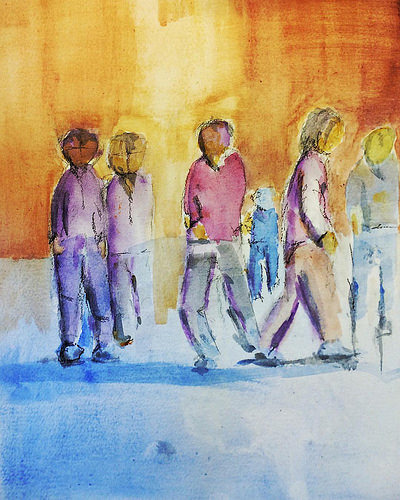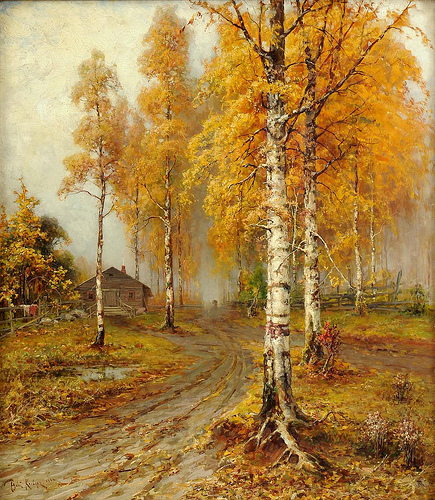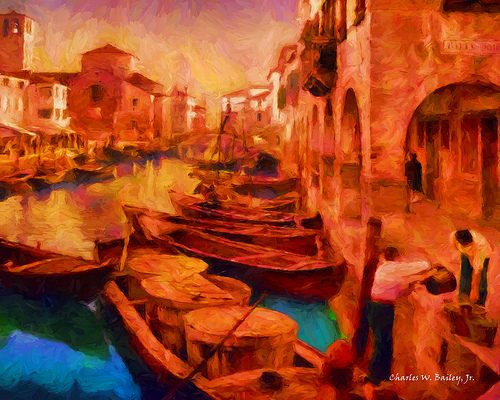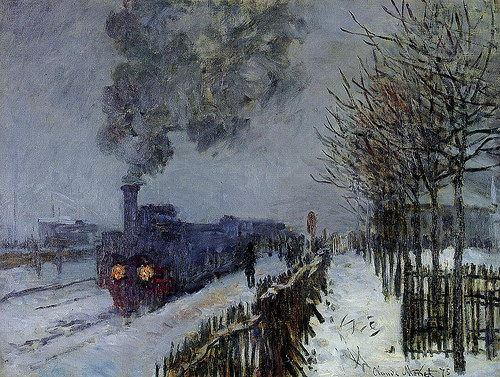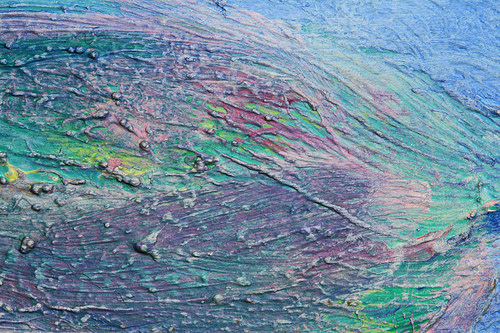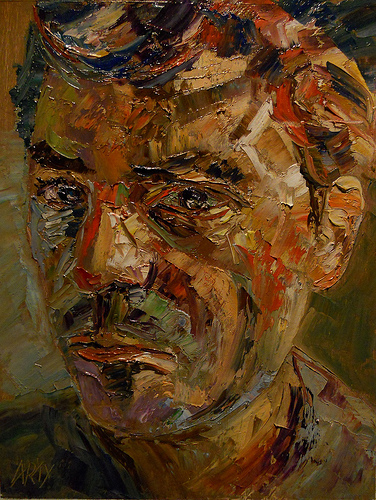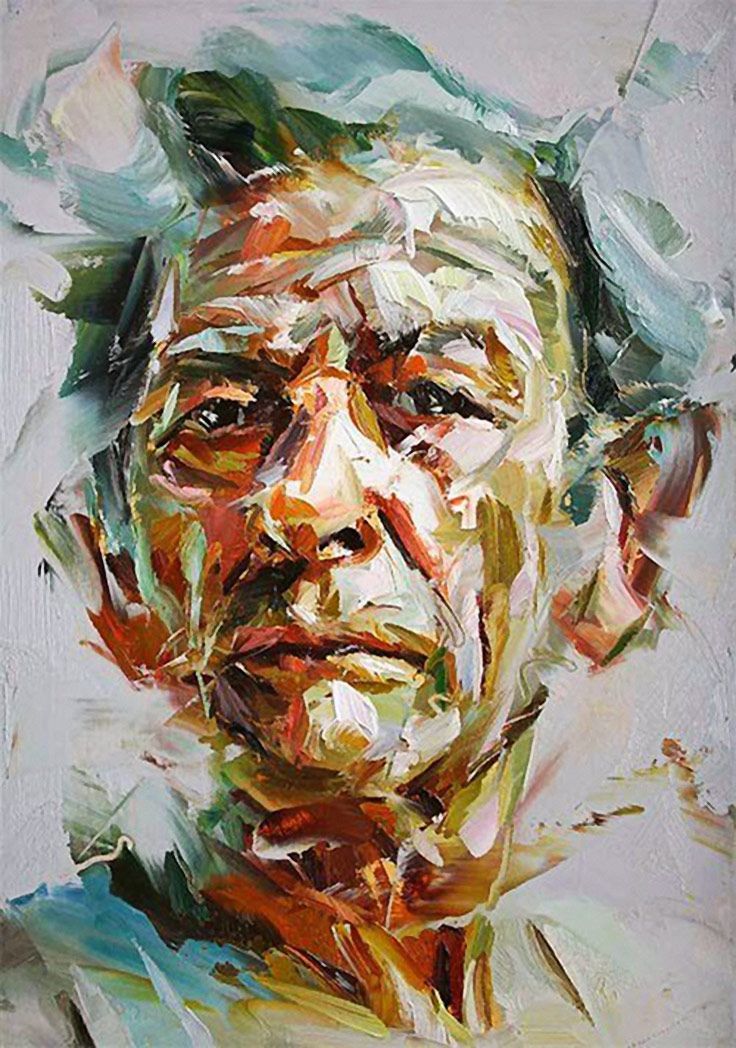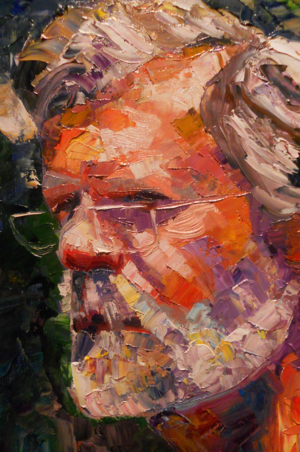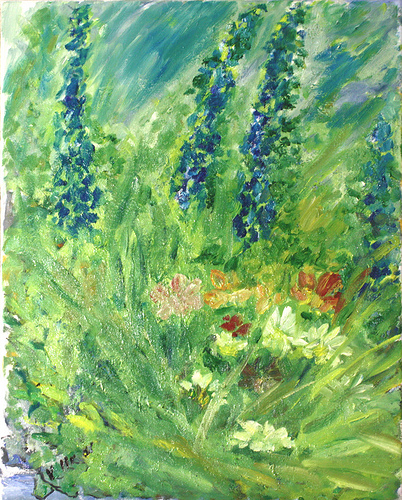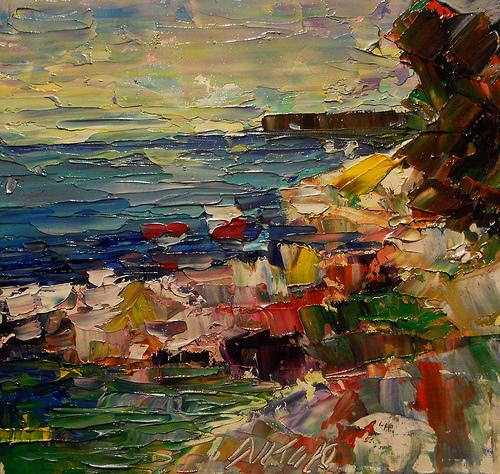Paint Speaks, Loudly and Softly
Art can have its voice: an active or a passive voice. The subject of the sentence determines the difference in voice in the language. If it acts, it is happening, and if it receives the action, it is passive. Did you eat it (Active), or was it eaten by you (Passive)? The issue is how the action occurs.
If a painting has an active voice, it can be found in the same way. What is the subject of the image, and does it make the people who view it want to stand and look longer, compared to a passive voice that evokes a shorter look?
Bold textures, vivid colors, and strong contrasts, like those found in oil painting, present active subject areas. Smoother textures, more neutral colors, and less bold colors all create relationships that express passive regions.
Sometimes a painting is all active or all passive, but sometimes an artist may blend and present two types of expressions in the same work. It is tempting to take a quiet, peaceful setting and add something bold.
Oil Paint Resonates Realism →
Oil paintings, with their unique character-like properties, have a rich history that dates back centuries. The paint, with its different flexibility and depth of color, can be applied in many ways, from thin glazes diluted with turpentine or linseed oil to a dense, thick paste. Because it is slow to dry, artists can continue working on the paint for much longer than other types of paint, a characteristic that has been exploited by artists throughout history. This extended working time provides a more significant opportunity for blending and layering, a technique that has been used to create some of the most iconic works of art.
Oils also allow the artist to create an extraordinary richness of color and a wide range of transitions in intensity and shades. The colors do not change noticeably after drying, and it is possible to produce both opaque and transparent effects, as well as gloss finishes with stunning effects of light, color, and realism.
Oil paint reacts and dries chemically with oxygen in the air, gradually changing from a liquid to a gel and finally becoming hard. Some colors dry at different rates, and the paint can be applied and then reworked. The application can be with a brush, knife, cloth, toothpick, or whatever works. Once the painting is complete, it is important to take care of it to ensure its longevity. This includes protecting it from direct sunlight, extreme temperatures, and humidity, as well as regular cleaning and maintenance. With proper care, an oil painting can last for generations, preserving the artist's vision and skill for years to come.
Eyes, Layered for Sadness →
A stranger, no name or artist identified? We will only know him by the texture, color, and layers of paint which will supply feeling and meaning.
Layers of paint were added to give more meaning, bringing our focus to the eyes. A forehead of layers asking why. Shadows of white with no answers
A weak small jaw and a solemn mouth, lacking expression, serve to confirm the pain, stress, and sadness reflected in the eyes.
Minerva Teichert Pioneer Artist
Minerva Teichert (August 28, 1888 – May 3, 1976) was an American painter notable for her art depicting Western and Mormon subjects.
As a young child, she was once asked if she was famous. Teichert said, “No, but I will be someday.”
Teichert was a pioneer in Latter-day Saint artwork. She insisted…..
“I must paint.” She wrote in her autobiography, “I want ... to be able to paint after I leave here. Even though I should come back nine times, I still would not have exhausted my supply of subjects, and one lifetime is far too short but maybe schooling for the next.”
Painting "Not Alone" by Minerva Teichert
The First Ward Chapet in Pocatello It was torn down and became a parking lot for a bank but the front wass was a mural of the “Not Alone” paintiing above.
Age and Wisdom Embodied with Strength in a Stranger's Face →
Age and wisdom embodied with strength in a stranger’s face, no artist identified, no name for the man, identified and named by texture, color, and layers of paint- each conveying meaning.
The painting started showing with the first brown sketched layer the empty face of a man. Just an uninteresting mystery alone without the colors of paint.
Color filled the space, the second layer showing light, darkness, pain, stress, and wisdom. The shadows are purple with white borders suggesting strength.
Eyes and wrinkles, behind glasses, and strength are both present. Three layers likely and maybe six to tell the story.
Age and wisdom are embodied with strength.
The Painting Nighthawks Reviewed by Brent M. Jones
Nighthawks is a painting completed in 1942, oil on canvas, by Edward Hopper that presents people in a downtown diner late at night. The Huffington Post said on May 5, 2013 that this painting is one of the most recognizable paintings in American Art.
The painting was inspired by a diner in Greenwich Village in Manhattan. Hoper said, “I simplified the scene a great deal and made the restaurant bigger.” Standing alone between tall building at night we are drawn inside. The widows curve at their corners. The dull yellow walls hold the light within. At the base of the window is a jade green stripe of tile that curves in the corner with window. The cherry wood counter and surrounding stools stand out. No door to the outside can be seen.
The people are not looking at each other. The blond, younger counter boy is dressed in a white coat and seems to be where he should be, but the patrons raise questions as to why they are there. The lady in the red blouse eating a sandwich may have the counter boys attention as she sits by the man in the dark suit and hat. Hopper said he painted this man’s nose longer suggesting a beak and hawk look. The other man seems to be a potential concern with his back turned to us. Both seem overdressed for that time of night and a dark area of the city.
Why these customers would be in this diner is a question presented to us by the patrons dress, the time of day, focus of lighting and the empty streets.
Outside the sidewalk is a pale green and the surrounding buildings are a dark red brick. The diner has a sign across the top with a cigar picture and the words “Phillies 5 cents Cigars”, also dating the time and place.



